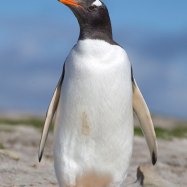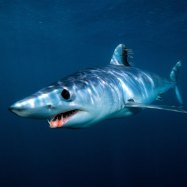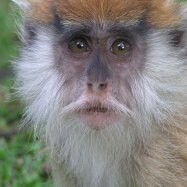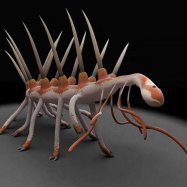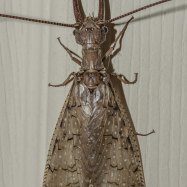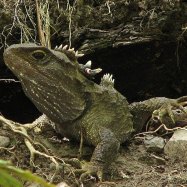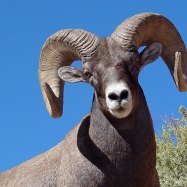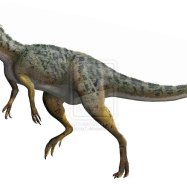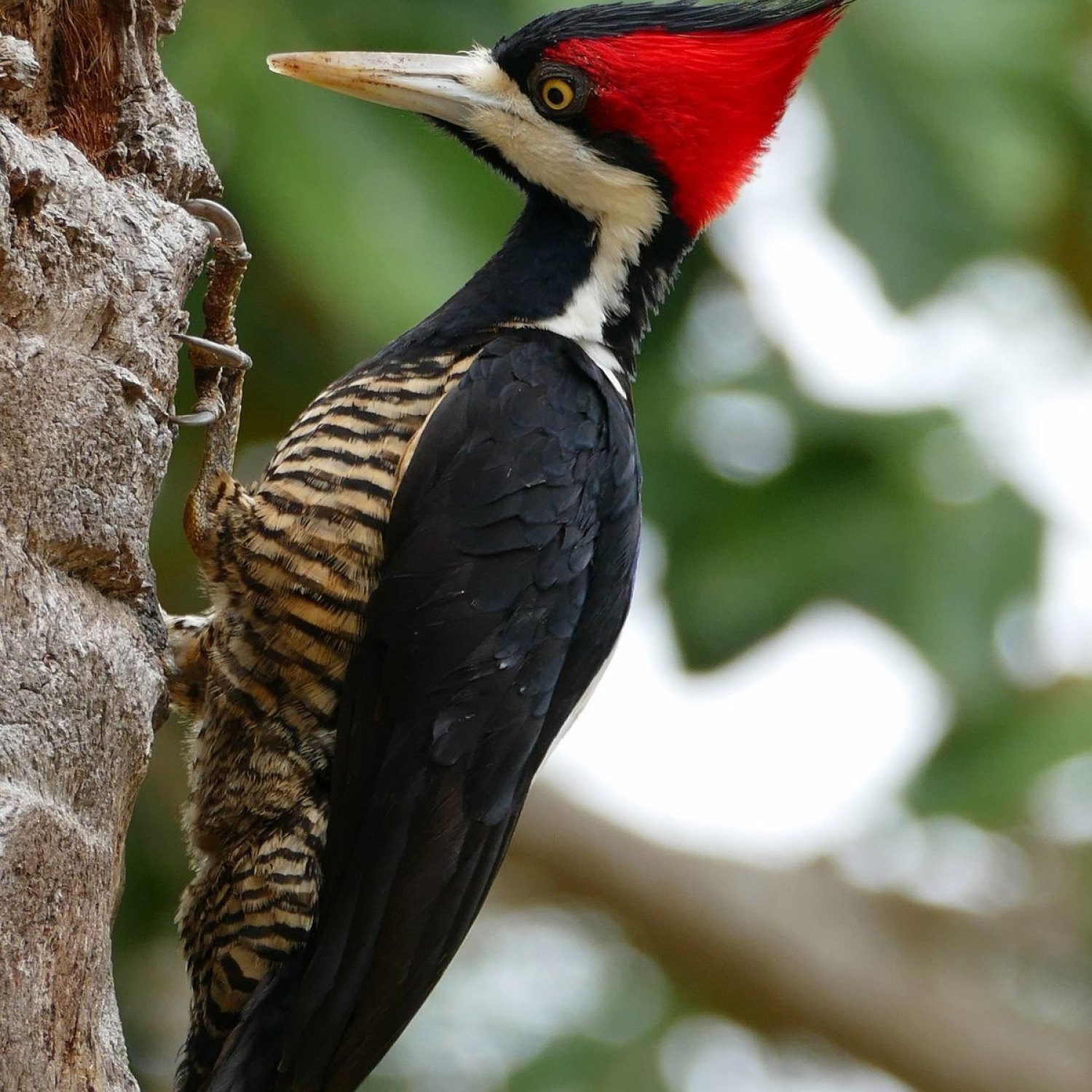
Woodpecker
Varies by species
Woodpeckers are fascinating birds found in different locations worldwide. With over 180 species, the length of these birds varies, but most are small to medium-sized. They are part of the Picidae family and are known for their unique body shape and behavior of pecking and drilling into trees to find food and create their nests. Marvel at these amazing creatures on your next nature walk. #woodpeckers #birdwatching #naturelovers #Picidae
Animal Details Summary:
Common Name: Woodpecker
Kingdom: Animalia
Habitat: Forests and woodlands
The Woodpecker: A Unique and Skilled Insect Hunter
The woodpecker, scientifically known as Picidae, is a fascinating bird that belongs to the kingdom Animalia. Commonly referred to as a woodpecker, it is a member of the Aves class and Piciformes order. This unique bird is easily identified by its characteristic behavior of tapping its beak against trees. It is a skilled insect hunter that inhabits forests and woodlands all over the world Woodpecker.The Family Picidae is a diverse group of birds that consists of over 200 species, making the woodpecker one of the most widespread birds on the planet. The unique adaptations and behaviors of this bird have fascinated humans for centuries, making it a popular subject among artists, poets, and scientists. In this article, we will delve deeper into the world of the woodpecker, exploring its habitat, feeding methods, physical features, geographical distribution, and more.
The Mighty Habitat
The woodpecker is a versatile bird that can thrive in various types of habitats. However, it prefers to live in forests and woodlands, where it can find a steady supply of food. These birds are highly dependent on trees, as they use them for feeding and nesting purposes. In fact, woodpeckers are considered keystone species, as their behavior and activities greatly impact the health of the forests they inhabit.They prefer mature forests with a mix of older and younger trees, as they provide a diverse range of food and nesting opportunities. Woodpeckers have also adapted to urban environments, with some species making their homes in parks, gardens, and even on buildings Wood Turtle. Their adaptability and resilience have contributed to their widespread distribution all over the world.
A Skilled Insect Hunter
The feeding methods of woodpeckers are truly incredible and unique. This bird is primarily insectivorous, meaning it primarily feeds on insects. Its specialized beak allows it to drill into trees, pecking and probing for insects hiding inside. This is often signaled by the rhythmic and repetitive tapping sound that is synonymous with woodpeckers. Their long tongues, sometimes extending up to four inches, are specially designed to extract insects from crevices in trees.Woodpeckers have also adapted to feed on a variety of other food sources, including fruits, nuts, and seeds. This varied diet allows them to thrive in different types of habitats, making them highly adaptable and resilient birds. Their keen eyesight and streamlined bodies make them skilled hunters, often seen clinging to trees in search of food.
A World of Diversity
There is no single woodpecker species; rather, there are over 200 unique and diverse species that vary in size, shape, coloration, and behavior. These birds can range from small to medium-sized, with some species growing up to 18 inches in length. The smallest species, the bar-breasted piculet, measures only 3.5 inches in length. The diversity in size and shape is also reflected in their coloration, with different species showcasing a variety of patterns and shades.From the striking black and white pattern of the Northern Flicker to the vibrant red crest on the head of the Pileated Woodpecker, each species has its unique features that make it stand out in its own way. Some species, such as the Three-toed Woodpecker, have specialized feet with two toes forward and two backward, allowing them to cling to trees even upside down. Others, such as the Great Spotted Woodpecker, have a specialized tail feather that acts as a prop when climbing.
Global Distribution
The woodpecker has a widespread global distribution, inhabiting almost all continents except for Antarctica and Australia. The exact location of a woodpecker can vary by species, with different species preferring different habitats. Some are found in only specific regions, while others can be seen in various parts of the world.For example, the American Three-toed Woodpecker is only found in North America, while the Arabian Woodpecker is only found in the Arabian Peninsula. The Downy Woodpecker is commonly found in North America, while the Black-rumped Flameback can be seen across the Indian subcontinent. This widespread global distribution of woodpeckers can be attributed to their unique adaptations and behaviors, making them resilient and adaptable to various environments.
Conservation Concerns
Despite their widespread distribution, many woodpecker species are facing threats to their populations. Habitat loss and degradation pose a significant risk to these birds, as they heavily rely on trees for their food and nesting. Climate change is also a growing concern, as it can disrupt the delicate balance of ecosystems, affecting the woodpeckers' food sources and nesting sites.To protect these birds and ensure their continued presence in our ecosystem, conservation efforts must be made. This includes protecting their habitats, promoting sustainable forestry practices, and raising awareness about the importance of woodpeckers in maintaining a healthy forest ecosystem.
Woodpeckers: Mighty Birds With Unique Adaptations
In conclusion, the woodpecker is a truly fascinating bird that boasts unique adaptations and behaviors. Its specialized beak, long tongue, and keen eyesight make it a skilled insect hunter, while its versatile diet allows it to thrive in different types of habitats. With over 200 diverse species, the woodpecker can be seen all over the world, bringing a touch of color and song to our forests and woodlands.However, their populations are under threat, and it is our responsibility to preserve and protect these majestic birds. By understanding the importance of woodpeckers in our ecosystem and taking necessary conservation measures, we can ensure their continued presence and contribution to our natural world. So the next time you hear that familiar tapping sound, take a moment to appreciate the mighty and unique bird that is the woodpecker.

Woodpecker
Animal Details Woodpecker - Scientific Name: Picidae
- Category: Animals W
- Scientific Name: Picidae
- Common Name: Woodpecker
- Kingdom: Animalia
- Phylum: Chordata
- Class: Aves
- Order: Piciformes
- Family: Picidae
- Habitat: Forests and woodlands
- Feeding Method: Insectivorous
- Geographical Distribution: Worldwide
- Country of Origin: Varies by species
- Location: Varies by species
- Animal Coloration: Varies by species
- Body Shape: Small to medium-sized
- Length: Varies by species
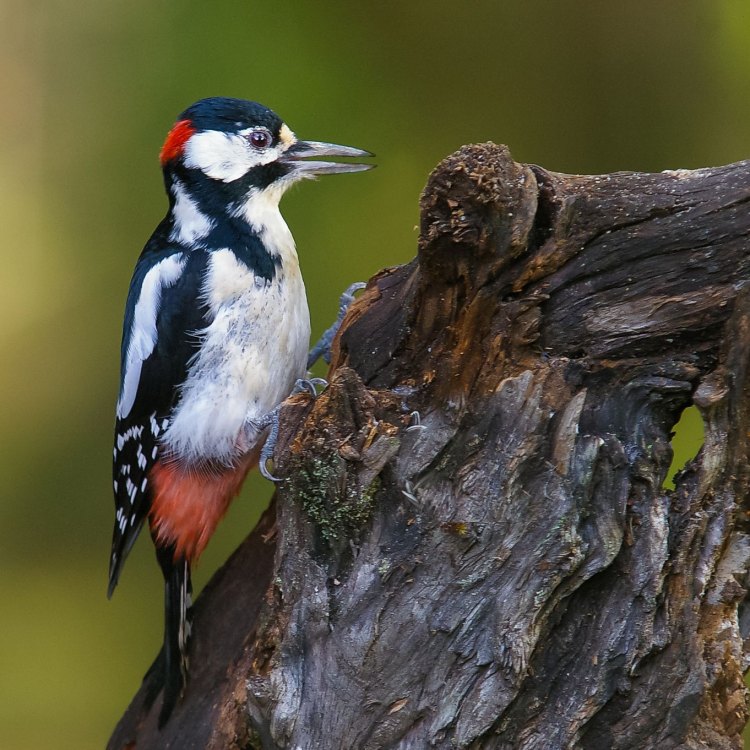
Woodpecker
- Adult Size: Varies by species
- Average Lifespan: 5-12 years
- Reproduction: Sexual
- Reproductive Behavior: Monogamous
- Sound or Call: Varies by species
- Migration Pattern: Some species are migratory
- Social Groups: Varies by species
- Behavior: Drumming on trees, territorial
- Threats: Habitat loss, deforestation
- Conservation Status: Varies by species
- Impact on Ecosystem: Creates cavities for other birds and animals
- Human Use: Decorative woodwork, birdwatching
- Distinctive Features: Strong bill, zygodactyl feet
- Interesting Facts: Can peck up to 20 times per second
- Predator: Various predators
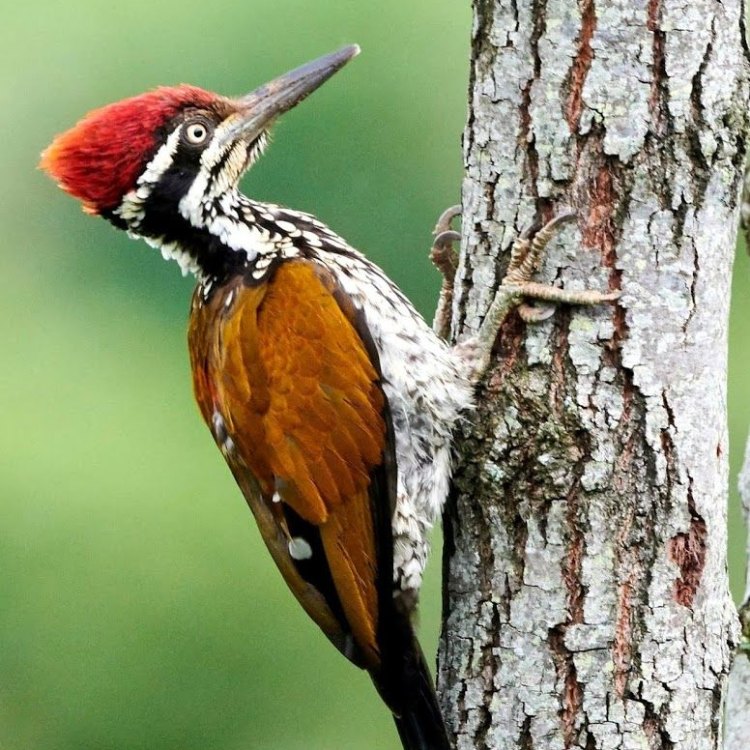
Picidae
The Fascinating World of Woodpeckers: Masters of Drumming and Architects of the Ecosystem
When we think of woodpeckers, we may picture the iconic cartoon character Woody Woodpecker or the familiar tapping sound in the woods. But behind the cute facade and distinctive behavior lies a fascinating world of these incredible birds. From their distinctive features to their vital role in nature, woodpeckers have captured our attention and curiosity for centuries. In this article, we'll delve into the unique world of woodpeckers, from their behavior to their impact on the ecosystem PeaceOfAnimals.Com.Woodpeckers belong to the order Piciformes and the family Picidae, which includes over 200 species worldwide. They can be found in all continents except for Antarctica, with the majority residing in the forests of North and South America. Their size varies depending on the species, with the smallest ones measuring around 3 inches and the largest reaching up to 23 inches in length. However, one thing remains consistent among all woodpeckers – their distinctive features.
One of the most notable features of woodpeckers is their strong, sharp bill. This tool is not only used for feeding but also for excavating holes in trees. The top of their skull is specifically designed to absorb the shock of repeatedly pecking on hard surfaces without damaging their brain. Another unique feature is their zygodactyl feet, which means they have two toes facing forward and two facing backward. This allows them to grip onto trees and move easily on vertical surfaces White Sturgeon.
While all woodpeckers share these distinctive features, each species also has its own unique call and coloration. The sound or call of woodpeckers varies depending on the species, with some producing a high-pitched call while others emit a low, rolling "rattle". As for their coloration, woodpeckers can come in a variety of patterns and colors, from the classic black and white stripes to vibrant reds and yellows.
Apart from their appearance, another interesting fact about woodpeckers is their incredible speed while pecking. They are known to peck up to 20 times per second, which is faster than the eye can see. This remarkable feat is possible due to their powerful neck muscles and specialized skull structure. The rapid pecking not only helps them find food but also serves as a form of communication.
Woodpeckers are social birds, but their social groups can vary depending on the species. Some are solitary, while others live in small groups or pairs. They are also known to be monogamous, with mated pairs staying together for the breeding season and sometimes for life.
Reproduction in woodpeckers is sexual and follows a monogamous pattern. Breeding season can vary depending on the species and location, but it usually occurs in the spring and summer months. To attract mates, male woodpeckers perform elaborate courtship displays, including drumming on trees to create a loud, rhythmic sound. This drumming behavior is also used to establish territory and communicate with other birds.
Once a pair has formed, they will work together to excavate a hole in a tree trunk, usually for nesting purposes. This hole is carefully crafted by the male and can take weeks to complete. Interestingly, woodpeckers do not reuse their nest holes, but they may provide homes for other birds and animals, creating a vital impact on the ecosystem.
Woodpeckers are also known for their annual migration patterns. However, not all species migrate, and those that do only migrate short distances. Some species, such as the Red-headed Woodpecker, are migratory, while others, like the Pileated Woodpecker, are non-migratory.
Speaking of the ecosystem, woodpeckers play a crucial role in maintaining balance and diversity in their environment. Their drumming behavior may be seen as destructive, but it actually serves a vital purpose. By creating cavities in trees, woodpeckers provide a home for other birds, such as owls and kestrels, and small mammals like chipmunks and squirrels. These cavities also serve as protection during harsh weather conditions and play a significant role in regulating insect populations.
However, despite their important role in the ecosystem, woodpeckers face numerous threats that put their survival at risk. Habitat loss and deforestation are the primary threats to these birds. As human activity continues to encroach on their habitats, woodpeckers struggle to find suitable nesting sites and sufficient food sources. Climate change and natural disasters also impact woodpeckers, leaving them vulnerable to habitat destruction and food shortages.
Another predator of woodpeckers is domestic cats. Feral and domestic cats kill billions of birds each year, with woodpeckers being among their victims. This highlights the need for responsible pet ownership and measures to protect vulnerable bird species from predators.
As for the conservation status of woodpeckers, it varies by species. Some, like the Ivory-billed Woodpecker, are critically endangered, while others, like the Downy Woodpecker, are of least concern. However, all woodpecker species, regardless of their conservation status, require our protection and care to ensure their survival and the balance of our ecosystems.
Apart from their ecological importance, woodpeckers also hold cultural significance. In the past, these birds were used for decorative purposes, with their feathers and skulls often incorporated into Native American headdresses and jewelry. Today, woodpeckers are a popular birdwatching attraction, with many bird enthusiasts traveling to see and observe their unique behavior and beauty.
In conclusion, woodpeckers are not just the "drummers" of the forest, but they are also essential architects of the ecosystem. Their distinctive features, behavior, and impact on nature make them a fascinating subject to study and admire. However, as with any creature, their survival is threatened by human activities and our irresponsible actions. It is up to us to appreciate and protect these incredible birds and ensure that they continue to thrive in their natural habitats. So, the next time you hear the familiar sound of woodpeckers in the woods, take a moment to appreciate the wonder and beauty of these amazing creatures.
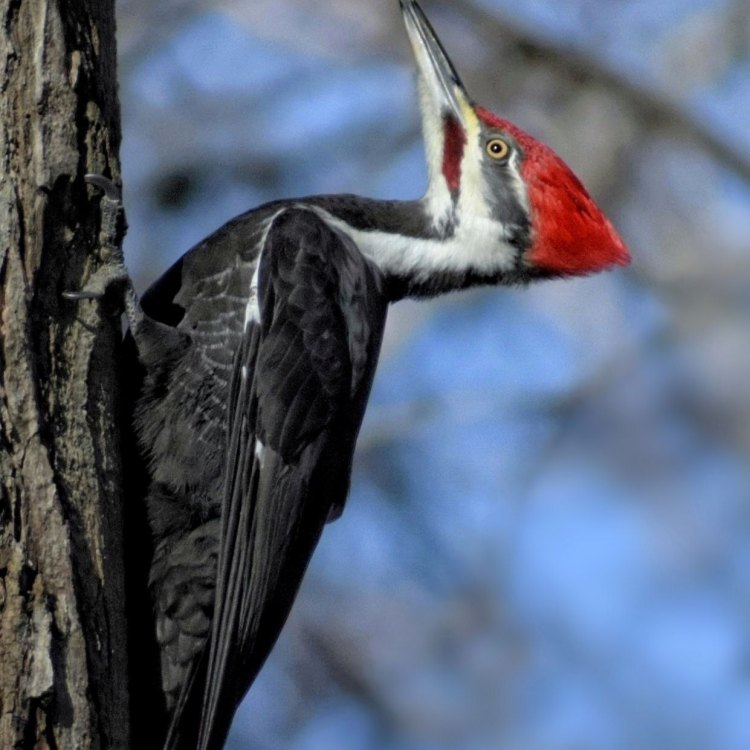
The Woodpecker: A Unique and Skilled Insect Hunter
Disclaimer: The content provided is for informational purposes only. We cannot guarantee the accuracy of the information on this page 100%. All information provided here may change without prior notice.

